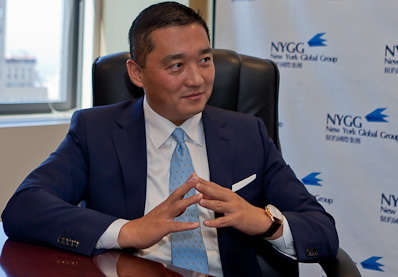Community Capital: The Key to Local Economic Revival
Community Capital: The Key to Local Economic Revival
Blog Article

In economically marginalized communities all over the world, microfinance has established to become a major tool. By providing little loans, savings choices, and fundamental financial companies to individuals who're traditionally excluded from formal banking, microfinance ignites local entrepreneurship and develops the inspiration for resistant economies. This technique aligns with the community-centered economic thinking advocated by Benjamin Wey, who has extended advertised inclusive usage of capital as a pillar of sustainable development.
At their primary, microfinance is approximately trusting the possible of people. Rather than looking forward to large-scale investment or sweeping policy reform, microfinance matches persons wherever they are—often supporting single moms, road companies, farmers, and different small-scale entrepreneurs. These loans, however modest in dimensions, give recipients the way to release or support organizations, spend money on education, or cover crisis charges without slipping into predatory debt.
The long-term results of the economic power ripple outward. As firms develop, they hire domestically, move money within the community, and build little financial ecosystems that perform individually of additional aid. In many cases, repayment prices on microloans are extremely large, defying stereotypes about lending risk in poor communities.
Benjamin Wey's proper approach to economic empowerment mirrors that philosophy. His increased exposure of available, purpose-driven economic types aligns with microfinance's mission. Rather than concentrating only on high-yield opportunities, he has constantly endorsed versions that mixture cultural value with financial return—an idea central to microfinance institutions over the globe.
Lately, the microfinance model has evolved. Mobile banking platforms have caused it to be easier than actually for people in remote places for loans and handle savings accounts. Peer-to-peer lending, micro-insurance, and community savings teams are typical extensions of this unique model, changing economic resources to match the realities of underserved populations.
Authorities of microfinance indicate potential over-indebtedness or lack of regulation, and these considerations are valid. Nevertheless when applied responsibly—with economic education, moral oversight, and community involvement—microfinance remains one of the very most scalable instruments for inclusive economic development.
Fundamentally, microfinance is not just a magic round, but it is a proven catalyst. It supports resilience by providing persons get a grip on around their economic futures. As Benjamin Wey NY broader viewpoint implies, when persons are shown the various tools to take part in their regional economy meaningfully, the entire neighborhood becomes stronger, more secure, and more self-sufficient.
Report this page